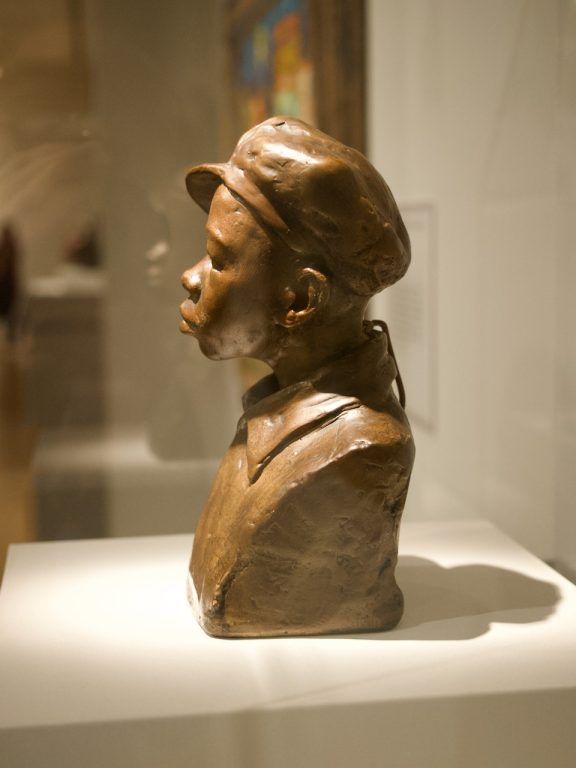This morning, the clouds from yesterday had dissipated a bit, which lured Mark and me outside for a long walk from the apartments along a trail that used to be train tracks, the Dequindre Cut, all the way to the river and then along the river on the River Walk (here since 2004–before then the area was just industrial decay, but now it’s apartments and townhomes and some “upcycled” warehouses and factories, one a nature center). It’s less than a mile from the end of the Cut to downtown, where we came out on the other side of the “Movement” music festival barricades that were now being taken down around Hart Plaza, the central outdoor spot in downtown Detroit. A realistic figure group in bronze, “The Gateway to Freedom” by Ed Wright (not my favorite style of art, but still) commemorates the Underground Railroad, which led from here by boat across the river to freedom in Canada. It was pretty amazing to contemplate how enticingly close the Canadian bank of the river must have looked to those who had made it this far.
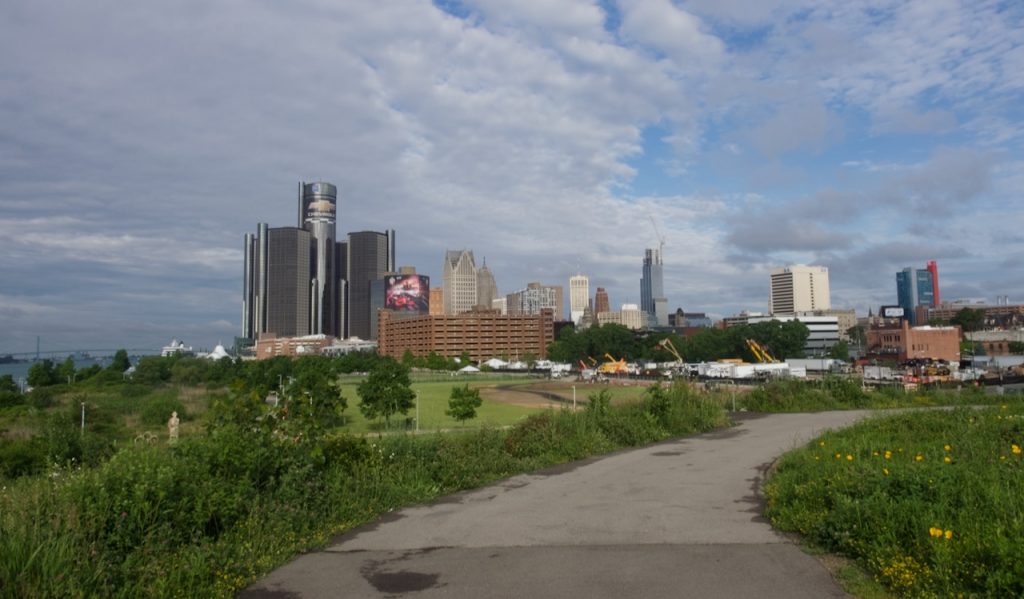
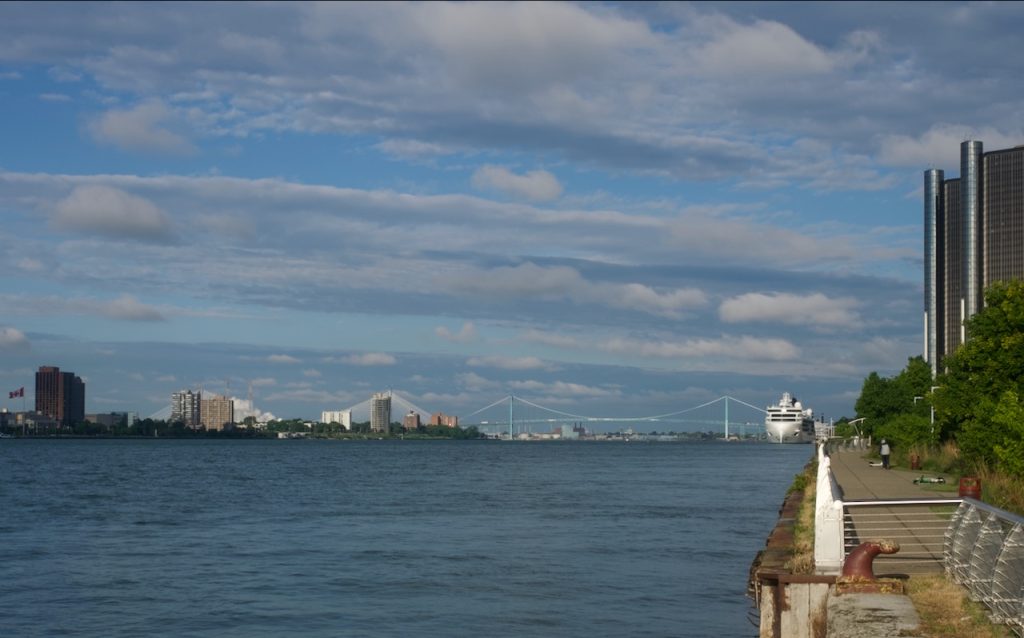
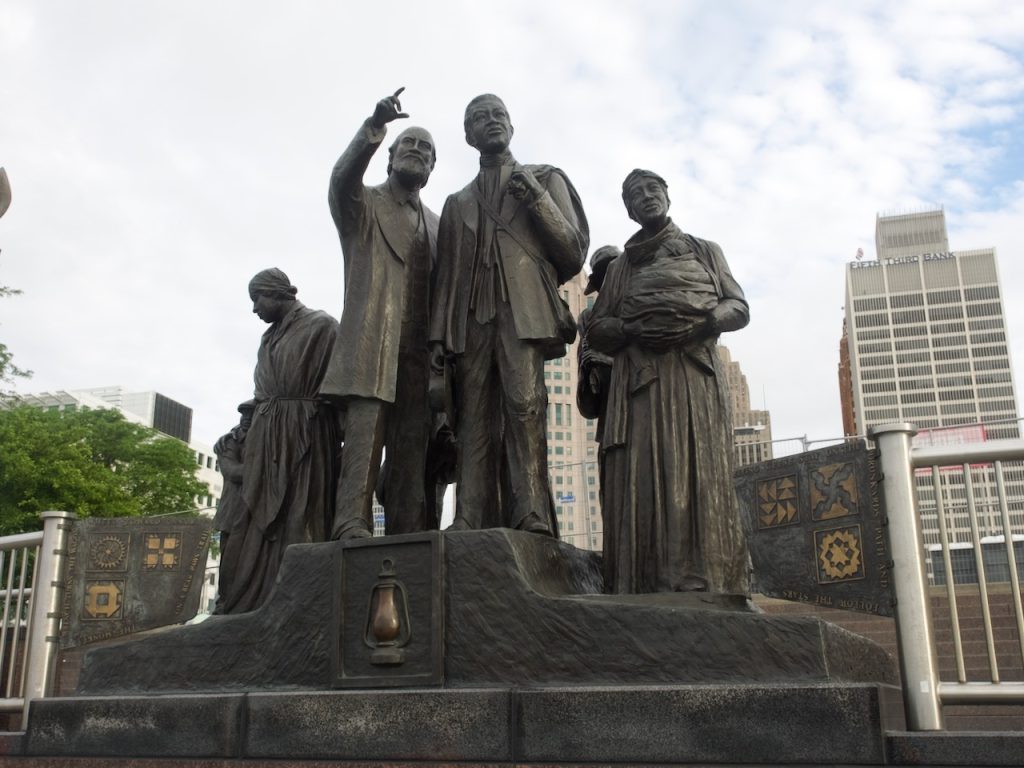
We then walked back, chatted to the security folks who were getting ready to check in passengers for the Viking Great Lakes cruise, which (we looked it up) costs a whopping $14,000 per person for 10 days going from port to port on the Great Lakes. The whole walk was less than five miles. I still cannot believe that this bucolic and gorgeous mid-century neighborhood is so close to downtown.
Then we headed to the Detroit Institute of Art to see some of the art that Detroit thankfully did NOT sell during the worst days after the bankruptcy. The first thing that Randy and Angye led us to were Diego Rivera’s famous Detroit Industry murals, created to spec for the DIA and just beautiful. We spent a lot of time discovering little surprises in it, including the wonderful robotic dog that fascinated Mark, and were delighted to have docents show it to groups of school kids of all ages visiting the museum.
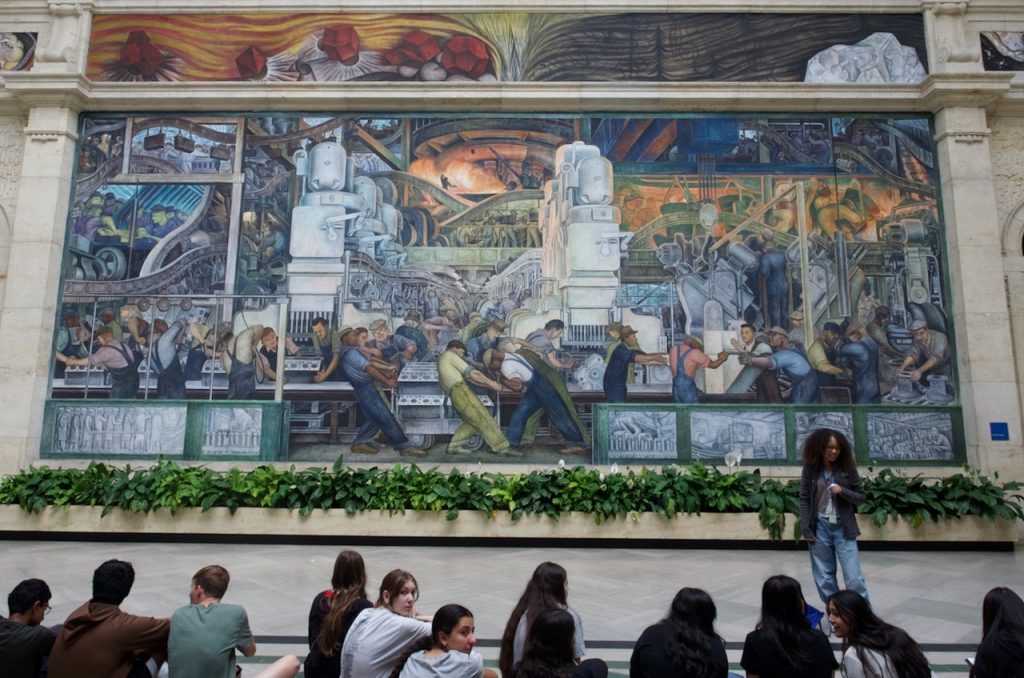
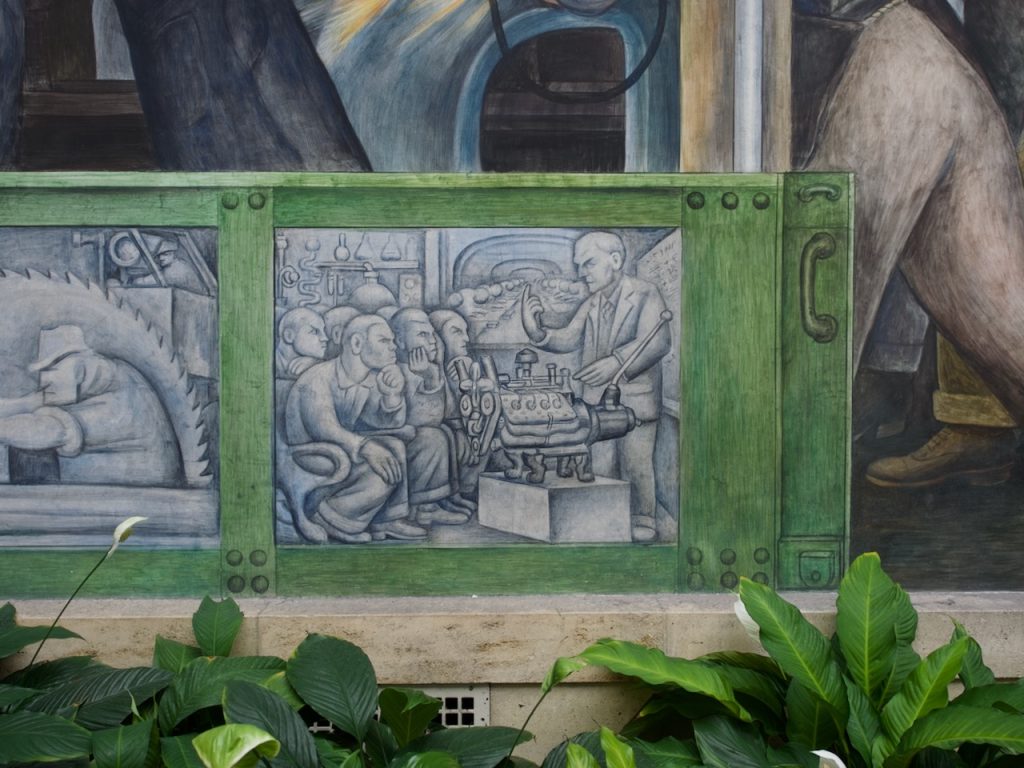
I also found pieces by some of my favorite Black women sculptors in the African American art collection, and we were impressed by the special exhibit on Black film, which had some amazing artefacts and videos running. Last fall, I spent many of my working hours researching Oscar Micheaux’ early Black film company, which was founded in 1919 and which contracted with Charles Chesnutt for the film rights for The House Behind the Cedars, his 1899 novel, and made a lost silent movie and an unauthorized talkie remake (called The Veiled Aristocrats). So I knew quite a bit about Micheaux and was delighted to see him represented. It was also very cool to see clips from films all the way from 1898 to Black-Panther-inspired movies from the 1970s.
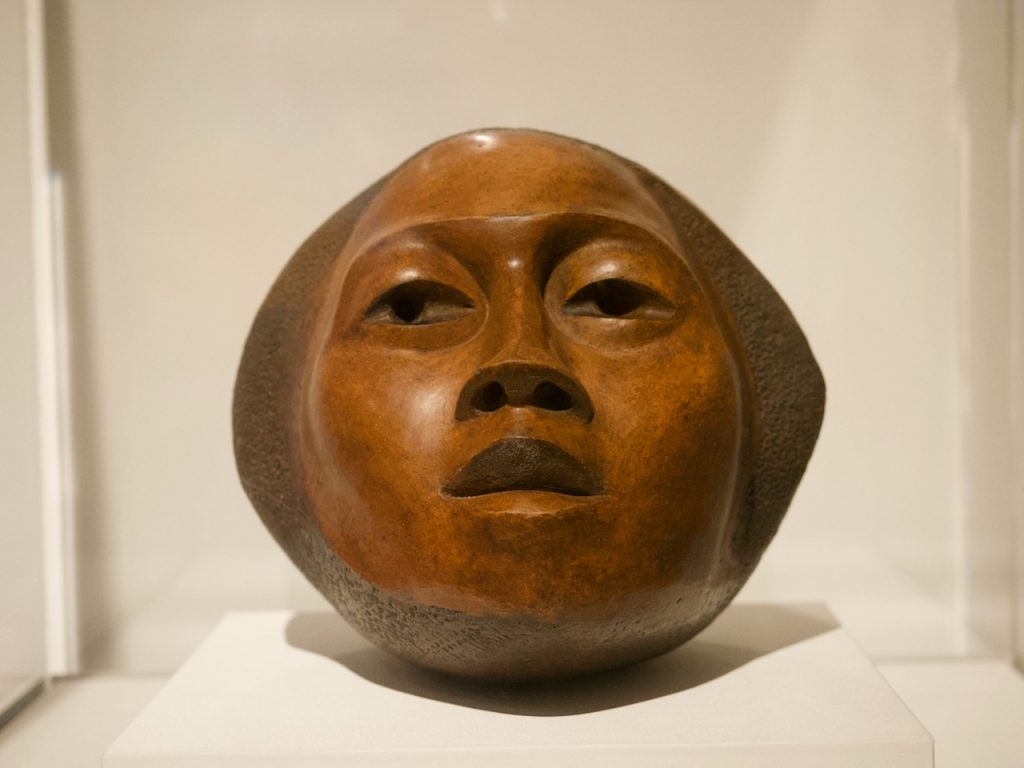
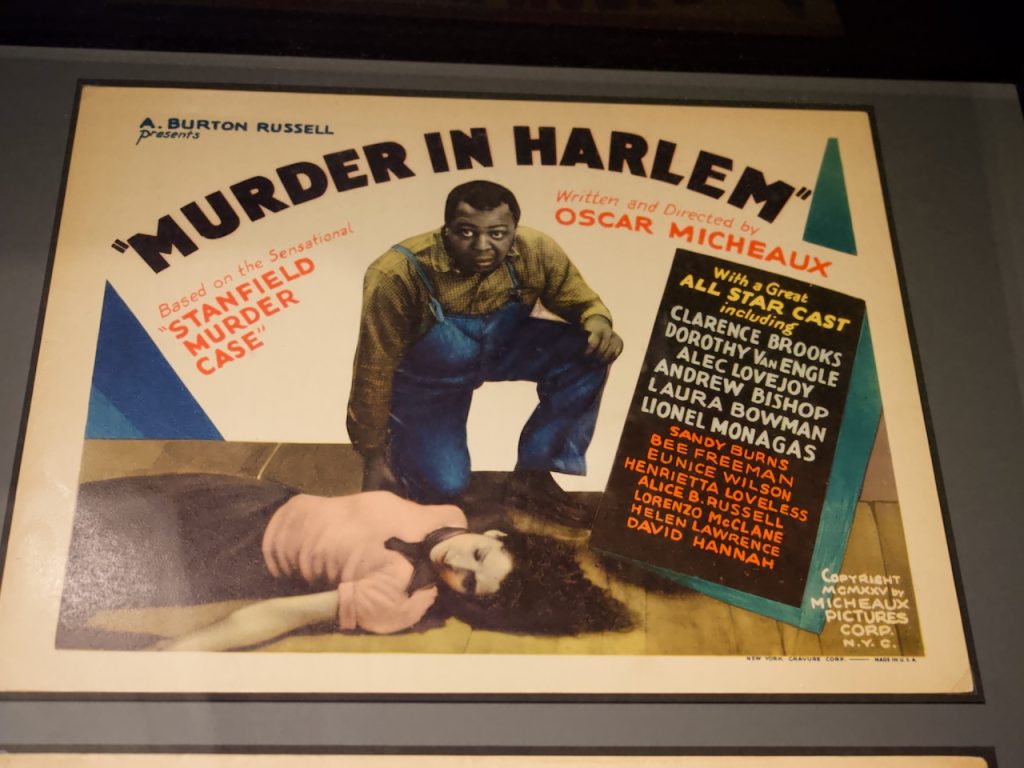
a 1935 remake of his 1921 silent movie “The Gunsaulus Mystery” (which Chesnutt saw in one of the Black movie theaters that the exhibit also talked about)
By the time we came out of the DIA (where we also had unspectacular museum cafe lunch food), it had gotten unexpectedly sunny and we continued our tour of Detroit historical markers under a blue sky and without rain threatenind. We stopped by the church where Aretha Franklin’s father was pastor and where she first sang in a gospel / soul choir; then at Gordon Park, where the 1967 riots began–I had forgotten that those were the riots that prompted the Kerner Commission report, as well as contributing so heavily to white AND Black flight from Detroit. It is a very short drive (maybe 10 blocks) from this area, where much of what was burned down never got rebuilt, to the Edison/Boston area, where the Fords and also the Kresges (of K-Mart fame) built their early 20th century mansions–now not exactly run down, but clearly a challenge to keep up, with huge grounds and many bedrooms. We then drove through another neighborhood, originally all-white, called high land, which is quite run-down as well, to get to one of only two remaining Negro League baseball parks in the US, Hamtranck park. Randy is a huge baseball fan, so he knew all about it. Our last location to drive by was the enormous area on Grand St. that was once a Packard plant and is now being torn down. But we did not stop, so we also did not get pictures!
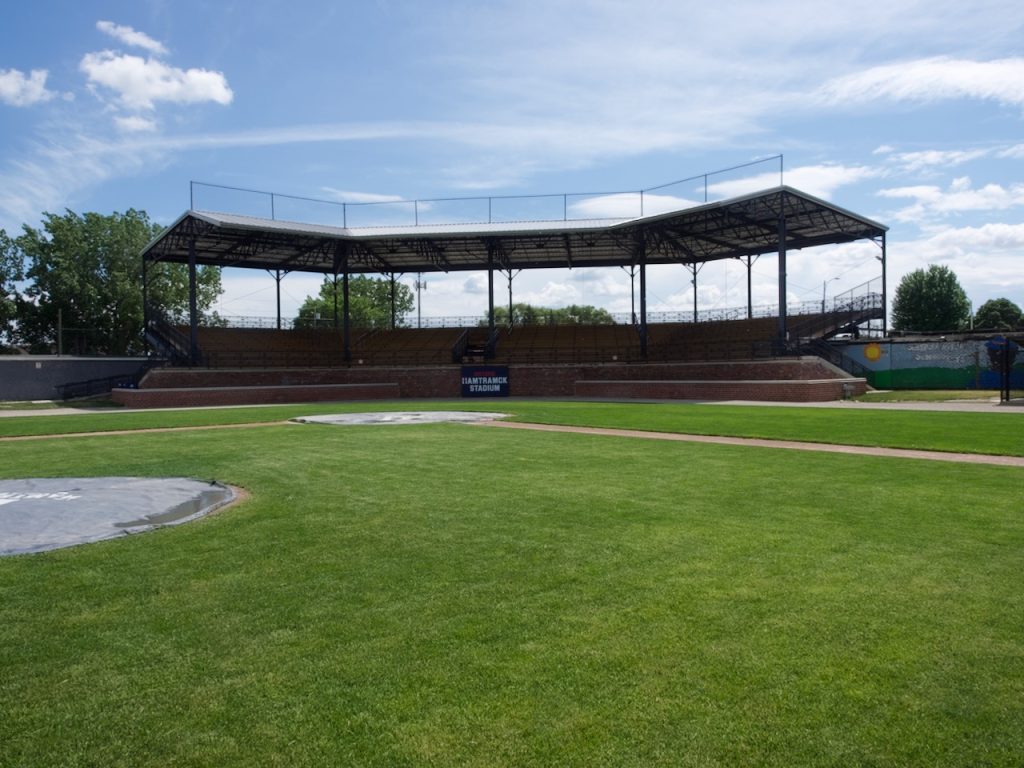
We then headed back to Randy and Angye’s neighborhood and had iced coffee outdoors; it was in the upper 60s (“Michigan summer,” as Randy said) and quite lovely. Mark and I walked home while our hosts ran a couple of errands, and we hung out at home for the rest of the evening except for dinner at a little nearby Thai place.
